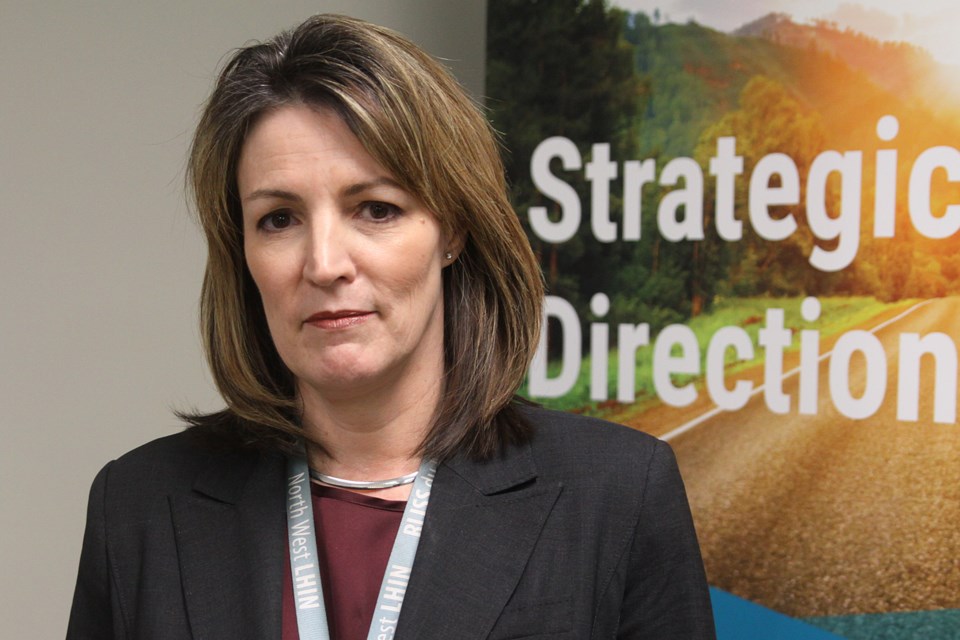THUNDER BAY – There are now 33 patients at Thunder Bay Regional Health Sciences Centre diagnosed with COVID-19.
Of those, about 80 per cent were admitted for COVID-19, with the remainder in hospital for other reasons, but found to have the virus during routine testing of patients.
Hospital president and CEO Rhonda Crocker-Ellacott says the number, six more than announced on Thursday, is concerning.
“Of those, nine are in the intensive care unit. We have seen a dramatic increase in COVID-19 admissions since Dec. 31. According to our analysis it’s a 208 per cent increase since the end of December. That represents 105 new admissions, with an average length of stay of 6.27 days,” Crocker-Ellacott said on Friday during an interview with Dougall Media reporters.
According to Crocker-Ellacott, four of the nine COVID-19 patients admitted to the intensive care unit are unvaccinated.
COVID-19 is also having an effect on staffing levels. On Friday there were nearly 100 staff at home, either diagnosed with COVID-19 or self-isolating because of close contact.
That’s actually on the low side, Crocker-Ellacott said.
“Like any other area, any other employer, we’re seeing significant absences related to COVID-19, either diagnoses or isolating as a result of a COVID-19 exposure. Today we have 95 staff off, either self-isolating or with COVID,” she said.
“That represents about three per cent of our staff. That’s actually a lower number, compared to what we’ve experienced over the last week or more. We’ve had numbers north of 160, so more like five and six per cent of our staff off as a result of COVID-19 or self-isolation.”
To date, the absences haven’t had a major impact on the hospital’s ability to function. Under provincial order, Thunder Bay Regional and other hospitals in Ontario have reduced surgical procedures to urgent and essential, pushing back any surgeries considered non-essential or elective.
Crocker-Ellacott said the biggest challenge with so many staff sidelined as a result of the virus is which departments the absences are occurring in.
“The most significant challenge is whether or not the distribution of the staff are in one area or whether they’re distributed somewhat across the organization. We’ve been somewhat fortunate that we’ve had staff that we’re able to redeploy to different areas to make sure we’re able to manage the ongoing clinical care needs,” Crocker-Ellacott said.
The ramp-down in surgeries has also helped.
Crocker-Ellacott’s task has also been made slightly more difficult by the hospital’s recent vaccination mandate. About 30 staff, half clinical and half non-clinical, are currently on leave because of an unwillingness to share their vaccination status or provide proof of vaccination.
She said they are more than willing to work with staff who are not yet fully vaccinated to come up with a plan and would welcome them back should they choose to get their shots.



